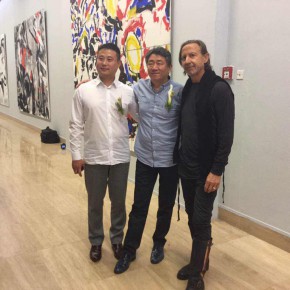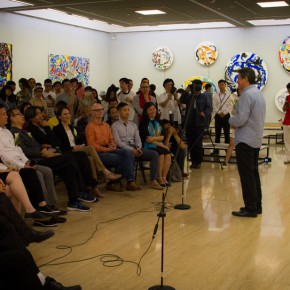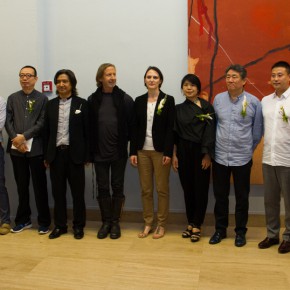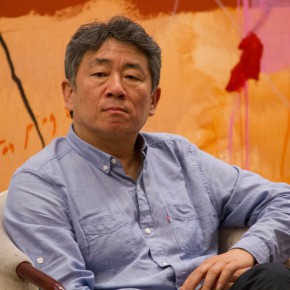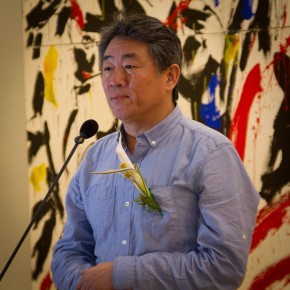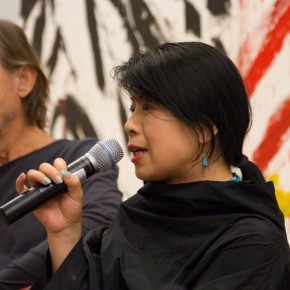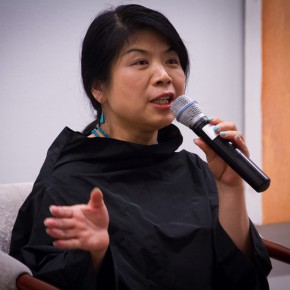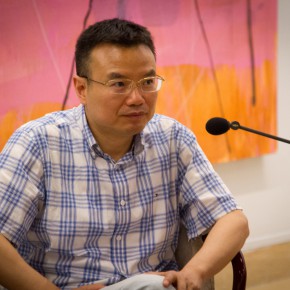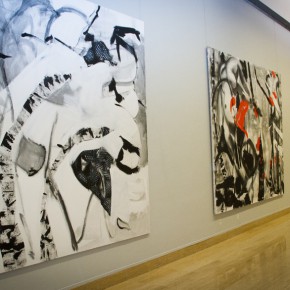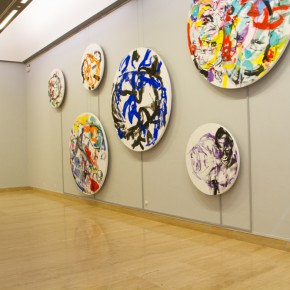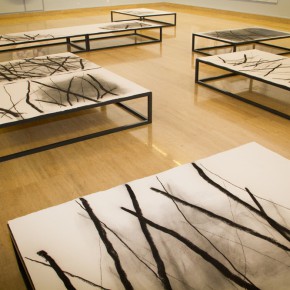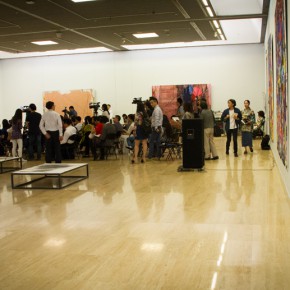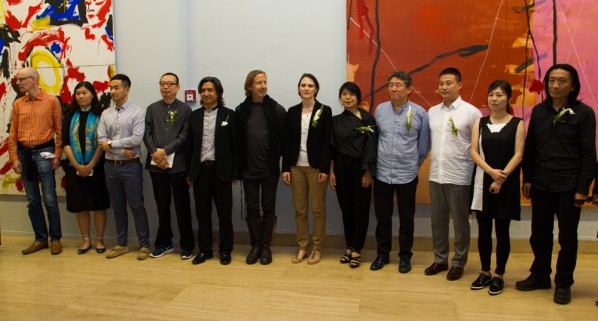
On the afternoon of May 21, 2015, “Oriental Abstraction VS Western Figuration: A Dialogue between Tan Ping and Luciano Castelli” opened at the National Art Museum of China. The exhibition for the Oriental and Western art dialogue, which has been prepared over two years, is presented in 4 cities – Beijing, Shanghai, Zurich and Geneva across two countries – China and Switzerland. Through the exhibition the curator Huang Mei has built a bridge for Chinese and Swiss artists to have an in-depth dialogue on contemporary art, with the Chinese artist Tan Ping elucidating his abstract traits and Swiss artist Luciano Castelli exploring his figurative style. With the trend in artistic globalization, the dialogue tries to inspire the audience to rediscover the deeper cultural similarities and differences which are implied in the Oriental and the Western art contexts and to make a targeted exploration of different creative thinking and visual images in Oriental and Western art contexts.
Ahead of the opening ceremony ofthe exhibition, the curator Dr. Huang Mei and the artists Tan Ping and Luciano Castelli had a discussion entitled “The Oriental and The West: Mental and Physical Dialogue”, which was hosted by Prof. Peng Feng from Peking University.
During the discussion, the curator Huang Mei said: “It is necessary to invite Tan Ping to participate in the exhibition, while it is an accident to invite Luciano Castelli to participate.” Huang Mei said that there was an urgent need fora case study in the field of Chinese contemporary painting which demanded a professional and fair dialogue withinternational artists, which was also the basic idea for the planning of the exhibition, the concern of Tan Ping over the 10 years and the discovery of Luciano Castelli made her thinking about the combination of a rotating, dancing, “narcissistic” artist from the West and a quiet, contemplative, Oriental philosophizing artist in order to create a strange dialogue.
Huang Mei introduced Luciano Castelli who participated in the Dokumenta 5, Kassel when he was 21 years old in 1972, he shared an exhibition hall in the “Representation Abroad” exhibition at the Hirshhorn Museum and Sculpture Garden, Washington, together with Hockney in 1985, while he shares an exhibition hall which is as large as the hall 30 years ago, together with Tan Ping today.
Then, Peng Feng introduced the fact that the works by Luciano Castelli were divided into 3 parts, respectively showcasing representatives of the different periods. Castelli said his work had gradually changed to abstraction in the 1980s and the selected works created in the 1990s were dominnated by the black and white, in order to echo the form of Tan Ping’s work, in addition, people could find his self-portrait which was hidden in these works. The exhibited “Energy Revolving Series” painting showcases the new form of work that the artists have continuously explored since the 1990s and the series is on show for the first time throughout the world.
Tan Ping talked about his feelings for the exhibition, and first of all, he said his painting is a “figurative” micro, the friction of carbon pen and paper, the effect of carbon powder on the paper with the shade of color being the things he is concerned with and this “figuration” is closely related to the education he accepted in CAFA. Tan Ping said he always thought he was expressive, lyrical, and strong but he found his “quietness” in contrast to the work by Castelli, and using boxing and Tai Chi to respectively draw a metaphor between the works by Castelli and himself. The correlation is the interesting place for the show. Tan Ping said it was fortunate to have such a dialogue and he admired the color of the work created by Castelli and the way of rotating a painting, and he thought the change of easel painting was consistent with his way of painting, which made the dialogue closer. He said that by comparing two very individual artists, people would see the cultural differences between the Orient and the West and it was an individual comparison and also the encounter of two cultural genes.
In the discussion, Castelli talked about the story of the rotating painting, inspired by the experience of living in Berlin and Paris, and the former rock singer also talked about the lyrics and melody of music influencing his painting. Huang Mei said she was concerned about expressionism for a long time and became attached to CAFA and became a curator. She mentioned that she would continuously be concerned with the works by Tan Ping, especiallyas she was interested in the reaction of the West and she was looking forward to Castelli making China excited.
The exhibition is on show at Hall 5, National Art Museum of China, going through to May 31.
Text by Zhang Chi, Photo by Xu Fan/CAFA ART INFO
Translated by Chen Peihua and edited by Sue/CAFA ART INFO


